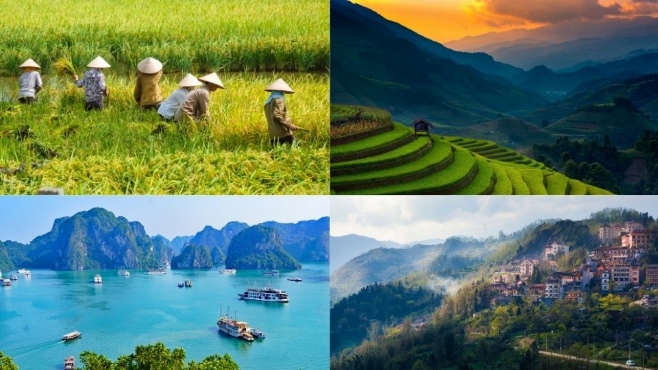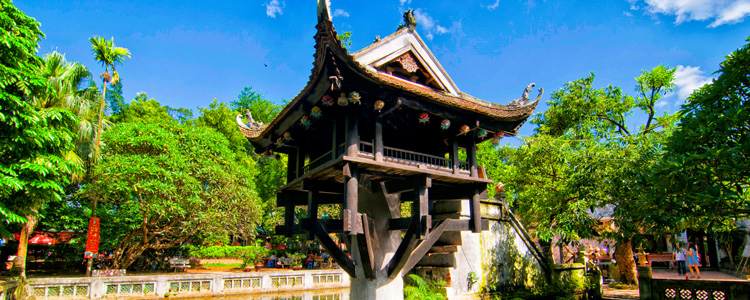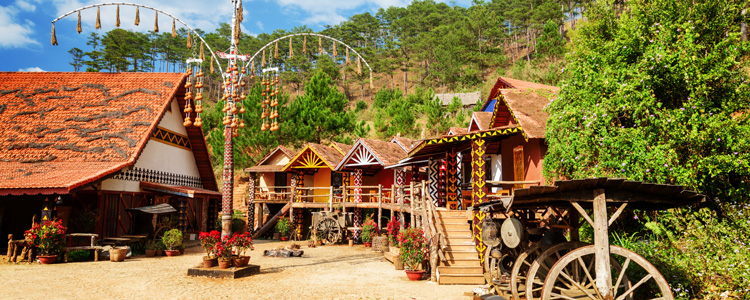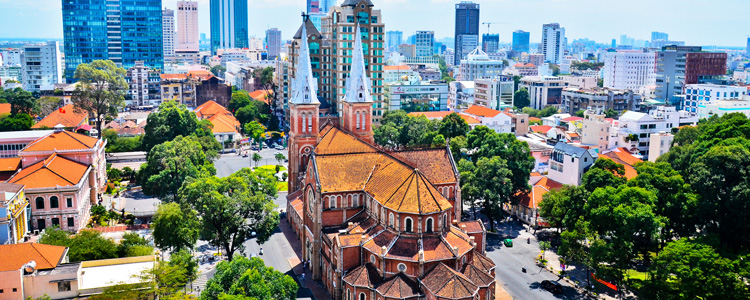Climate in Vietnam: Seasonal guide & regional weather tips
Viet Nam is located in both a tropical and a temperate zone. It is characterized by strong monsoon influences, but has a considerable amount of sun, a high rate of rainfall, and high humidity. Regions located near the tropics and in the mountainous regions are endowed with a temperate climate.Viet Nam is located in both a tropical and a temperate zone. It is characterized by strong monsoon influences, but has a considerable amount of sun, a high rate of rainfall, and high humidity. Regions located near the tropics and in the mountainous regions are endowed with a temperate climate.
- Introduction to Vietnam’s climate characteristics
- Seasonal overview of Vietnam
- Two Main seasons: Hot and cold
- Temperature patterns across the country
- Rainfall and humidity in Vietnam
- Impacts of monsoon and topography
- Northern Vietnam climate zones
- Central Vietnam climate zones
- Southern Vietnam climate zones
- Best time to visit Vietnam by region
- Climate change considerations and future trends
- FAQs about Vietnam’s climate
- Conclusion: Embracing Vietnam’s weather diversity

Regional variation in seasonal changes
Introduction to Vietnam’s climate characteristics
Tropical and temperate zones coexist
Vietnam, located in Southeast Asia, straddles both the tropical and temperate zones, endowing it with a unique and dynamic climate. Its long, narrow geography that stretches over 1,600 kilometers from north to south contributes to wide climatic diversity. Regions near the equator experience tropical conditions, while higher elevations and areas further north experience temperate weather patterns.
Role of the monsoon in shaping weather
The country is deeply influenced by monsoonal winds that determine the two main seasons and bring significant changes in humidity, precipitation, and temperature. These seasonal shifts create a rhythm of hot and rainy months followed by dry and cooler months. Thanks to this climatic interplay, Vietnam enjoys a diverse environment that supports agriculture, tourism, and rich biodiversity.
Seasonal overview of Vietnam
Two Main seasons: Hot and cold
Vietnam experiences two predominant seasons:
- The cold (or dry) season: November to April
- The hot (or rainy) season: May to October
However, these generalizations differ between regions. In southern Vietnam, the temperature variation is minimal, with differences of only about 3°C between seasons. In contrast, northern Vietnam sees more dramatic seasonal changes with differences as high as 12°C between winter and summer.
Regional variation in seasonal changes
From the Hai Van Pass northwards, Vietnam experiences four distinct seasons: spring, summer, autumn, and winter. In contrast, the southern part of the country only recognizes dry and rainy seasons, making for more consistent weather throughout the year.

Vietnam’s climate
Temperature patterns across the country
Annual temperature averages
Vietnam’s average annual temperatures range between 22°C to 27°C, depending on the region. While highland areas like Da Lat enjoy cooler weather around 18°C, coastal cities like Da Nang and Khanh Hoa experience warmer temperatures closer to 28°C.
Comparison with other countries in the same latitude
Due to the cooling influence of the monsoons and mountainous topography, Vietnam’s average temperatures are lower than other Asian countries on the same latitude. Winters are colder and summers are less intense, making the climate more moderate overall.
Rainfall and humidity in Vietnam
Annual rainy days and rainfall totals
Vietnam typically experiences 100 to 150 rainy days annually, with average rainfall between 1,500 and 2,000mm, depending on the region. Coastal and mountainous regions often record higher totals, especially during typhoon season.
Humidity and solar radiation statistics
The average humidity remains around 80%, contributing to the lush greenery throughout the country. Annually, Vietnam enjoys 1,500 to 2,000 sunny hours and average solar radiation levels of about 100 kcal/cm², supporting agricultural productivity.
Impacts of monsoon and topography
Climate diversity by geography
Vietnam’s varied geography - ranging from coastal plains and river deltas to high mountain ranges - contributes to notable microclimates. This variation is especially noticeable when comparing weather conditions across different elevations and latitudes.
Weather hazards: Typhoons, floods and droughts
Vietnam faces 6 to 10 typhoons annually, most commonly between June and November. These storms can bring floods, especially in the central and northern regions. Periodic droughts also impact agriculture, emphasizing the need for robust water management systems.
Northern Vietnam climate zones
Hanoi: A city of four seasons
Hanoi showcases all four seasons. The rainy season runs from May to September, bringing heavy showers and temperatures up to 29.2°C. The dry season extends from October to April, with averages dropping to 17.2°C. Extremes have ranged from 2.7°C (1955) to 42.8°C (1926).

Hanoi: A city of four seasons
Hai Phong: Mild and monsoonal
Hai Phong experiences a similar pattern to Hanoi, with a tropical monsoon climate. The city enjoys an average annual temperature of 23–24°C, and rainfall between 1,600 to 1,800mm.
Quang Ninh: Typical northern patterns
Quang Ninh mirrors northern Vietnam’s overall climate - hot, humid summers (May–September) and cool, dry winters (October–April). Average temperatures exceed 25°C, with annual rainfall ranging from 1,700 to 2,400mm.
Central Vietnam climate zones
Thua Thien Hue: Four distinct seasons
In Thua Thien Hue, the climate includes a cool spring, hot summer, mild autumn, and cold winter. The average temperature is 25°C, and the best tourism window is between November and April.
Da Nang: Rainy and dry seasons defined
Da Nang has a tropical climate with clearly defined rainy (September–December) and dry (January–August) seasons. With average annual temperatures of 28–29°C, it's a popular destination nearly year-round despite annual storm risks.

Da Nang: Rainy and dry seasons defined
Khanh Hoa: Oceanic tropical influence
Khanh Hoa’s mild oceanic monsoon climate leads to less extreme weather. With a moderate temperature of 26.5°C and annual rainfall over 1,200mm, this coastal area is ideal for beach tourism.

Khanh Hoa: Oceanic tropical influence
Lam Dong and Da Lat: Vietnam’s highland oasis
The Lam Dong region, especially Da Lat, enjoys a temperate climate with an average temperature of 18°C. Known for waterfalls, lakes, and flower festivals, it’s one of Vietnam’s most beloved cool-weather retreats.

Lam Dong and Da Lat: Vietnam’s highland oasis
Southern Vietnam climate zones
Ho Chi Minh City: Warm all year long
The southern metropolis experiences no winter, with temperatures consistently around 27.5°C. The rainy season runs from May to November, delivering around 1,979mm of rainfall. Travel to Ho Chi Minh City is possible year-round.

Ho Chi Minh City: Warm all year long
Ba Ria-Vung Tau: Sunshine and stability
This coastal area enjoys a tropical monsoon climate, average temperature of 27°C, and plentiful sunshine. It’s largely unaffected by storms, making it a dependable spot for tourism and beach activities.
Best time to visit Vietnam by region
| Region | Best time to visit | Reason |
| North (Hanoi, Sapa) | October to April | Pleasant weather, fewer typhoons |
| Central (Hue, Da Nang) | February to August | Dry season, beach-friendly |
| South (Ho Chi Minh City, Mekong Delta) | December to April | Drier, lower humidity |
Climate change considerations and future trends
Rising temperatures and urban heat islands
As global temperatures climb, Vietnamese cities face the threat of urban heat islands, making green urban planning more essential than ever. Monitoring temperature patterns and implementing eco-friendly infrastructure is key.
Adapting to weather extremes in agriculture and tourism
To counter rising challenges like droughts and flooding, Vietnam is investing in climate-resilient agriculture and sustainable tourism. Weather forecasting, early warning systems, and community education are also improving.
FAQs about Vietnam’s climate
- Does Vietnam have four seasons everywhere?
No. Only the northern region has four seasons. Central and southern regions have two seasons: dry and rainy.
- Is Vietnam’s climate suitable for year-round tourism?
Yes. While some regions experience heavy rains, most tourist destinations are accessible year-round.
- How cold does it get in northern Vietnam?
The lowest temperature ever recorded in Hanoi was 2.7°C, which occurred on January 12, 1955, during an exceptionally strong cold spell. It is important to note that the 2.7°C reading was a rare anomaly and not a common feature of Hanoi’s winter weather.
- When is typhoon season in Vietnam?
From June to November, particularly affecting central and northern coastal areas.
- What’s the hottest region in Vietnam?
Central coastal regions like Da Nang and Khanh Hoa often reach temperatures above 30°C in summer.
- Is air humidity a concern for travelers?
Yes, humidity averages 80%, which can make temperatures feel warmer. Light clothing is recommended.
Conclusion: Embracing Vietnam’s weather diversity
Vietnam's climate is as diverse as its landscapes. From cool highlands to sun-drenched beaches, the country offers year-round attractions across its many regions. Understanding these patterns helps travelers, farmers, and policymakers alike adapt to the rhythms of nature in this vibrant nation.
Related Articles
- Moc Chau: Highland paradise of tea hills & cultural adventures
- Team building and CSR activities in Vietnam: Visa services
- Honeymoon in Vietnam: Best romantic packages for couples
- Amanoi Resort in Vietnam: Luxury retreat in Vinh Hy Bay
- Six Senses resorts in Vietnam: Ninh Van Bay and Con Dao
- Con Dao Island: A historical and natural paradise in Vietnam
HOW CAN WE HELP?
APPLY WITH CONFIDENCE










